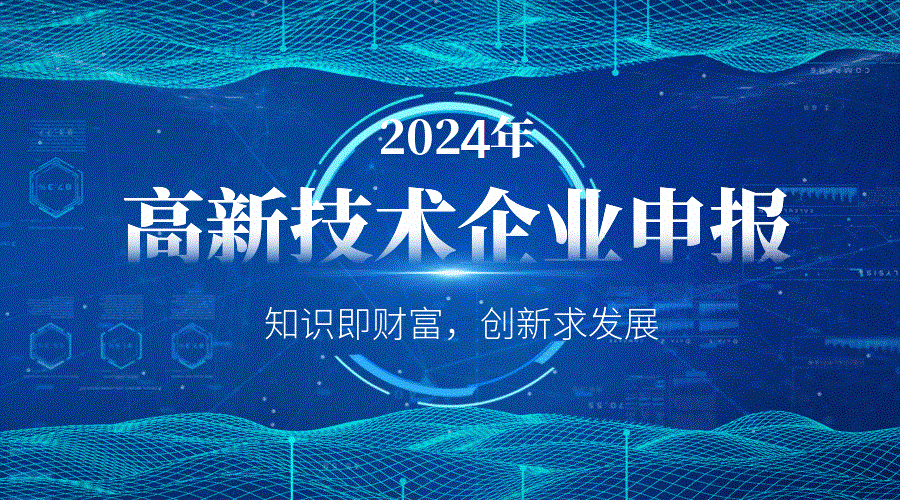微信扫一扫

中国:知识产权赋能生物经济发展


(点击图片放大观看)
Bio-economy is a new economy based on the development, progress and popularization of life science and biotechnologies, as well as an integral part of the national economy. Recent years have seen the continuous expansion of the industrial scale of China's bio-economy, as well as China's major breakthroughs and innovations in basic biological research.
To keep pace with the accelerated evolution of global biotechnologies, and realize sci-tech self-reliance and self-improvement at higher levels, China released the Fourteenth Five-Year Plan for Bio-economy Development in May 2022, proposing to build national biotech strategic strengths and break the bottlenecks of bio-economy development in an accelerated manner, thus realizing sci-tech self-reliance and self-improvement. Notably, traditional Chinese medicine (TCM) is an important part of China's bio-economy, attested by the issuance of the Fourteenth Five-Year Plan for the Development of Traditional Chinese Medicine in March 2022 with an aim to further empower bio-economy development.
"The innovative development of bio-economy has been inseparable from institutional guarantee for intellectual property (IP) and opened up a new path for the improvement of the IP governance system," said Song Wei, Executive Director of Intellectual Property Research Institute, University of Science and Technology of China.
The Fourteenth Five-Year Plan for Bio-economy Development stresses strengthening of IP protection and grooming of valuable patents to promote the realization of IP value, as well as the transformation and application of sci-tech achievements.
Strengthening independent innovation, breaking the bottlenecks of biotech development
The development and progress of life science and biotechnologies is vital to bio-economy development. China is active in a wide range of innovation fields. China led the world in patent filings in biological breeding as of late September 2021. According to the Patent Landscape Report on COVID-19-Related Vaccines and Therapeutics released by the World Intellectual Property Organization(WIPO) in March 2022, China is currently the leading origin of patent filings related to COVID-19 vaccines and therapeutics. All these achievements demonstrate China's accelerated efforts in realizing sci-tech self-reliance and self-improvement in bio-economy at higher levels.
"Innovation is essential to the development and future of bio-economy," said Wang Xiang, Deputy Director General of Department of Innovation and High-Tech Development, National Development and Reform Commission. "Despite remarkable achievements have been achieving in bio-economy innovation, China is still facing a lot of challenges and yet to improve technologies in key fields and links." Therefore, the Fourteenth Five-Year Plan for Bio-economy Development puts innovation front and center in bio-economy development, stressing that we should speed up biotech innovation and industrialization, and break development bottlenecks in an accelerated manner, so as to realize self-reliance and self-improvement in biotechnologies.
Innovation is also the core principle of the Fourteenth Five-Year Plan for the Development of Traditional Chinese Medicine. The Plan clearly states that we should use modern technologies and methods, explore the essence of TCM, and develop new features and advantages in innovations, so as to promote the featured development of TCM.
Promoting chain integration, expanding the industrial scale of bio-economy
How to speed up basic research and industrialization of innovative technologies in that period to boost the high-level innovative development of biotechnologies? IP is indispensable.
To accelerate the industrialization of China's synthetic bio-manufacturing, the China National Intellectual Property Administration(CNIPA) officially approved the establishment of the National Intellectual Property Operation Center for Synthetic Biology in April 2022. Relying on the resources of Tianjin Institute of Industrial Biotechnology, Chinese Academy of Sciences, the center has built the "Patent Pool for Synthetic Biology Enabling Technologies", the "Patent Pool for Underlying Technologies of Corynebacterium Glutamicum" and other patent pools, kept exploring high-level underlying patented technologies, helped improve the R&D capacity of China's synthetic biotechnologies, and set up platforms to duly release patent portfolios, so as to promote the marketization and industrialization of synthetic biotechnologies.
Patent navigation projects also play an important role in the industrialization of innovations in key fields. In recent years, with a focus on biomedicine and bio-health, biological breeding and other industrial fields, areas like Shanghai, Jiangsu and Heilongjiang have deployed patent navigation system, and analyzed regional biotech patent information to identify the competitive edge of local patented technologies, thereby providing guidance on the choice of technical paths and the transformation of the industrial structure. The output value of Shanghai's and Jiangsu's biomedical industry topped 700 billion yuan and 400 billion yuan in 2021 respectively, showing significant economic benefits generated by biological patents.
"The innovation chain of bio-economy is long-from basic research on synthetic biology and brain science, to technical improvement in genetic sequencing and biological detection, to product R&D and health services, all the links of the innovation chain are very important," said Song. Continuing to promote the integration of IP creation, application, protection, management and service with bio-economy innovation, and improving the mechanism for whole-chain management of bio-economy IP will provide stronger support for bio-economy development. (by Liu Na)
生物经济是以生命科学、生物技术的发展进步和普及应用为基础的新经济形态,是国民经济的重要组成部分。近年来,中国生物经济产业规模持续扩大、生物领域基础性研究取得重要原创性突破,创新能力凸显。
为顺应全球生物技术加速演进趋势、实现高水平科技自立自强,今年5月,中国印发《“十四五”生物经济发展规划》,明确打造国家生物技术战略科技力量,加快突破生物经济发展瓶颈,实现科技自立自强。值得一提的是,中医药作为中国生物经济的重要内容,今年3月,中国印发《“十四五”中医药发展规划》,进一步赋能生物经济发展。
“生物经济的创新发展离不开知识产权制度保障,其为知识产权治理体系的完善提供了新思路和新路径。”中国科学技术大学知识产权研究院执行院长宋伟表示。
《“十四五”生物经济发展规划》强调,要加强知识产权保护,培育高价值专利,促进知识产权价值实现与科技成果的转化实施等。
强化自主创新 突破生物科技发展瓶颈
生命科学和生物技术的发展进步,是做大做强生物经济的重要动力。当前,中国生物科技创新面广,创新态势活跃。截至2021年9月底,中国生物育种专利申请量排名全球第一;世界知识产权组织于今年3月发布的《COVID-19相关疫苗和疗法专利态势报告》指出,中国是新冠肺炎疫苗和疗法相关专利申请的最大来源国……这一项项成绩的背后,反映出中国实现生物经济领域高水平科技自立自强进程的加快。
“对于发展壮大生物经济来说,创新就是‘牛鼻子’,抓创新就是抓发展、谋创新就是谋未来。中国生物经济创新发展取得显著成就,但还面临不少挑战,在重点领域和关键环节技术上仍有较大提升空间。”中国国家发展和改革委员会高技术司副司长王翔表示。因此,《“十四五”生物经济发展规划》将创新摆在生物经济发展的核心位置,强调要加快推进生物科技创新和产业化发展,加快突破发展瓶颈,实现生物科技自立自强。
在《“十四五”中医药发展规划》中,创新同样是核心要义,其明确提出,注重利用现代科学技术和方法,深入发掘中医药精华,在创新中形成新特色新优势,促进中医药特色发展。
贯通全链条 壮大生物经济产业规模
“十四五”时期,如何加速推动基础研究、创新技术向产业化迈进,为生物科技高水平创新发展提供有力支撑?离不开知识产权的助力。
为加速推进中国合成生物制造产业化发展,今年4月,中国国家知识产权局批复设立中国合成生物产业知识产权运营中心。该中心依托中国科学院天津工业生物技术研究所,聚合“合成生物学使能技术专利池”“谷氨酸棒杆菌底层技术专利池”等多个专利池,不断挖掘底层高水平专利技术,助力中国合成生物产业技术研发能力提升,并且搭建平台及时发布专利组合成果,有效促进了合成生物技术的市场化运用与产业化建设。
专利导航工程在助力重点领域创新成果产业化运营方面同样发挥着重要作用。近年来,上海、江苏、黑龙江等地围绕生物医药与健康、生物育种等产业领域重点发力,部署开展专利导航工作,通过对区域生物技术领域的专利信息分析,确认本土专利技术竞争优势,从而指引技术路径选择,引领产业结构转型升级。2021年,上海市生物医药产业规模超7000亿元,江苏省生物医药产业产值超4000亿元,生物产业专利运营赋能经济发展效益明显。
“生物经济创新链条长,从合成生物学、脑科学的基础研究,到基因测序技术、生物检测技术的改进,再到产品研发和健康服务等,创新链条的每一环节都十分重要。”宋伟表示,持续推进知识产权创造、运用、保护、管理和服务的全链条与生物经济发展的创新链条贯通,健全生物经济知识产权全链条管理机制,能够为生物经济做大做强提供更加强有力的支撑。(刘娜)
(文章来源:中国知识产权报)
(编辑:邵京京 责任编辑:吕可珂 审校:崔静思)
(中国知识产权报独家稿件,未经授权不得转载)



-
上一条:知识产权献智慧,夏粮丰收底气足
-
下一条:一杯威士忌,品出地标“馥郁之香”
0条评论
推荐
投稿
我要投稿新帖
我要发帖-
诚“聘”精英!欢迎有志之士共谋未来#信息求助#
2024/08/17 21:00:43 甘肃丝路新世纪文化传播有限公司
甘肃丝路新世纪文化传播有限公司 -
最新!实现零的突破!#企业商讯#
2024/01/03 15:42:35 甘肃兴丰农林科技有限责任公司
甘肃兴丰农林科技有限责任公司 -
一颗土豆的成长“密码”——定西市安定区发展马铃薯产业发展观察#企业商讯#
2024/01/03 15:38:11 甘肃蓝天马铃薯产业发展有限公司
甘肃蓝天马铃薯产业发展有限公司 -
2023陇小南成绩单#企业商讯#
2024/01/03 15:32:31 甘肃陇小南生态农业发展有限公司
甘肃陇小南生态农业发展有限公司 -
众擎易举,重塑产业“品质美”——康县高质量发展观察(下)#企业商讯#
2024/01/03 15:29:10甘肃省康县兴源土特产商贸有限责任公司
 微信公众号
微信公众号



